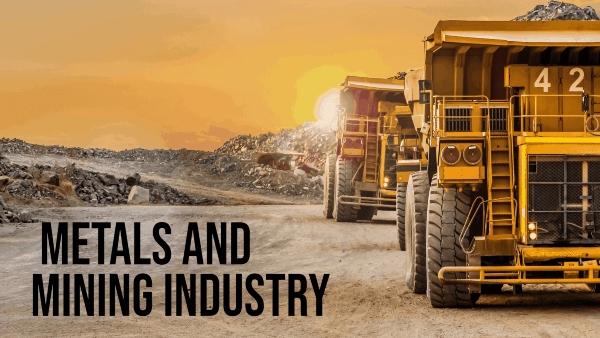The metals and mining sector is a vital part of the global economy. It involves the extraction of minerals and metals from the Earth, which are essential for various industries, like construction, manufacturing, and technology. This sector not only provides raw materials but also creates jobs and supports economic growth.
Key Components of the Sector:
Mining: First, the minerals and metals are extracted. Mining can be surface or underground. This depends on the depth and type of resource. Commonly mined materials are gold, copper, iron, aluminum, and coal.
Processing: After extraction, you need to process these raw materials in order to remove impurities and convert them into usable forms. This can involve crushing, grinding, and chemical treatments.
Recycling: An essential part of the metals sector is recycling. You can reuse many metals, which helps reduce waste and conserve resources. For example, aluminum cans are often recycled and turned into new cans, saving energy and raw materials.
Economic Impact:
This sector significantly contributes to job creation and economic development. It provides thousands of jobs, from miners to engineers and environmental specialists. Moreover, the industry supports local communities through infrastructure development and tax revenues.
Environmental Considerations:
While this sector is vital, it also has environmental impacts. Mining can lead to land degradation, water pollution, and loss of biodiversity. Therefore, companies are increasingly focusing on sustainable practices. This includes minimizing environmental footprints, restoring mining sites, and investing in cleaner technologies.
Government Initiatives:
The Indian government has implemented several policies to boost this sector. Initiatives like Make in India and the National Mineral Policy aim to enhance production, attract investment, and also ensure sustainable mining practices. These efforts are designed to make mining more efficient and environmentally friendly.
Example:
One notable player in the Indian metals and mining sector is Vedanta Limited. Founded in 1976, Vedanta has grown to become one of the largest mining companies in India. This company operates in various sectors, including zinc, copper, aluminum, and iron ore.
Vedanta’s operations not only help meet the country’s metal demands but also focus on community development and environmental sustainability. For example, their efforts in the mining regions often include education and healthcare initiatives for local communities. This showcases a commitment to social responsibility.
Challenges:
This sector also faces many challenges. Fluctuating commodity prices can impact profitability, as can geopolitical factors that disrupt supply chains. Additionally, labor shortages and the need for skilled workers are significant concerns. Companies must also invest in training and development to attract and retain talent.
Conclusion:
The metals and mining sector is a vital part of India’s economic landscape. With abundant resources and growing demand, it offers immense potential. Companies like Vedanta demonstrate how mining can contribute to economic growth while also being mindful of social and environmental responsibilities. As India continues to develop, the future of this sector looks promising, provided it adapts to the challenges ahead.
– Ketaki Dandekar (Team Arthology)
Read more about Metals and Mining Sector here – https://www.investopedia.com/ask/answers/040615/what-metals.
